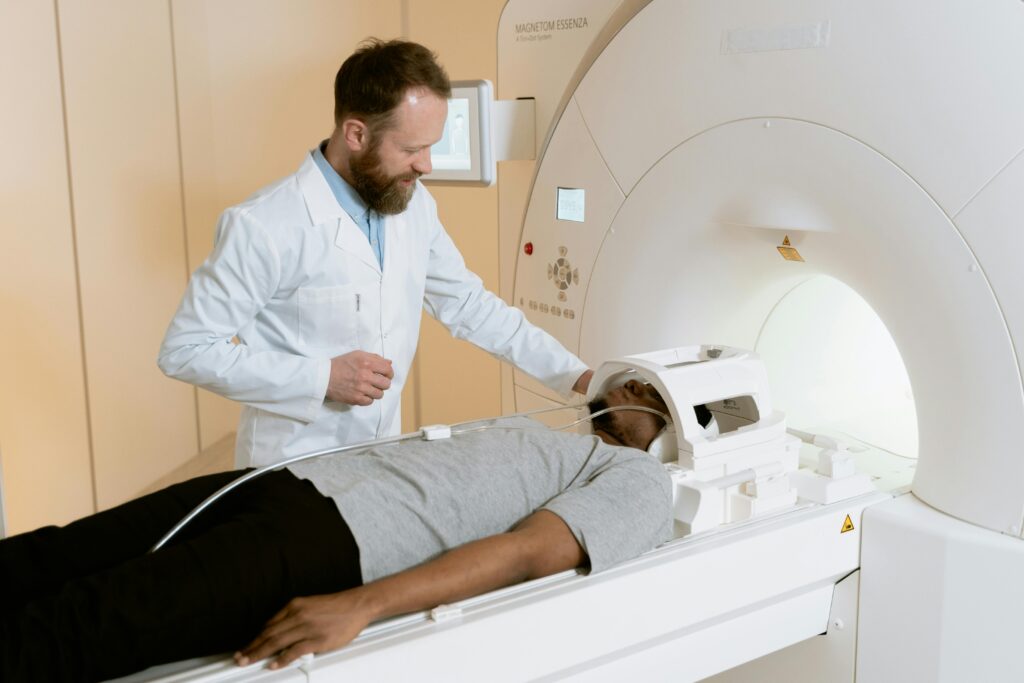Diagnostic imaging is a core component in modern medical practices, providing non-invasive methods for visualizing the internal structures of the body. It plays a key role in the detection, diagnosis, and monitoring of various medical conditions, aiding in accurate treatment planning. Techniques such as X-rays, magnetic resonance imaging (MRI), and ultrasonography have advanced significantly, enhancing both image quality and patient safety. Here’s a comprehensive overview of a medical diagnostic imaging center and its uses.
What Goes on at a Medical Imaging Center?
A medical diagnostic imaging center provides a range of imaging services to evaluate and monitor health conditions. These centers are equipped with technologies that aid in visualizing internal structures of the body, such as tissues, organs, and bones. Procedures like ultrasounds and other imaging tools help healthcare providers identify medical issues or track treatments effectively. The staff often includes trained technicians and radiologists who specialize in interpreting the results to guide medical care.
An ultrasound procedure involves the use of high-frequency sound waves to produce images of structures within the body. The sonographer starts by applying a water-based gel to the skin over the area being examined. This gel eliminates air pockets between the skin and the transducer, a handheld device that emits and receives the sound waves.
The sonographer then moves the transducer gently over the skin, transmitting sound waves into the body. These waves echo back when they encounter different tissues, creating real-time images on a monitor. Ultrasounds are non-invasive, painless, and safe, making them a valuable diagnostic tool for assessing various conditions and guiding medical decision-making.
When Should One Visit a Medical Imaging Center?
There are various reasons why an individual might need to visit a medical diagnostic imaging center. These facilities are key in providing accurate and timely diagnostic information to support healthcare decisions. Here are common reasons to seek imaging services:
- Diagnosing Medical Conditions: Imaging techniques like X-rays, MRIs, and CT scans are used to identify the presence and severity of diseases or injuries.
- Monitoring Treatment Progress: Regular imaging can help assess how well a treatment plan is working, such as evaluating tumor response to therapy.
- Screening for Potential Issues: Preventive imaging is employed to detect health problems early, often before symptoms appear.
- Evaluating Symptoms: For unexplained pain, swelling, or abnormal physical changes, imaging can help pinpoint the underlying cause.
- Guiding Medical Procedures: Real-time imaging, like ultrasound, is often used during procedures to guarantee precision, such as in biopsies or catheter placements.
Medical imaging centers play a key role in preventive care and the management of chronic or acute medical conditions.
What Conditions Can an Ultrasound Diagnose?
Healthcare providers often use ultrasounds for abdominal scans to detect gallstones, liver issues, or kidney problems. They are also reliable for monitoring pregnancy and visualizing the health and development of a fetus. Other applications include identifying thyroid irregularities or changes in soft tissues, as well as assessing blood flow concerns in veins and arteries to detect potential blockages.
Want To Learn More About Medical Diagnostic Imaging Centers?
Medical imaging centers are key resources in healthcare for diagnosing, monitoring, and treating health conditions using advanced technologies like ultrasounds. Reach out to your healthcare provider or local diagnostic imaging center for further details. For more guidance, consult a professional who can help you explore these helpful diagnostic tools.

